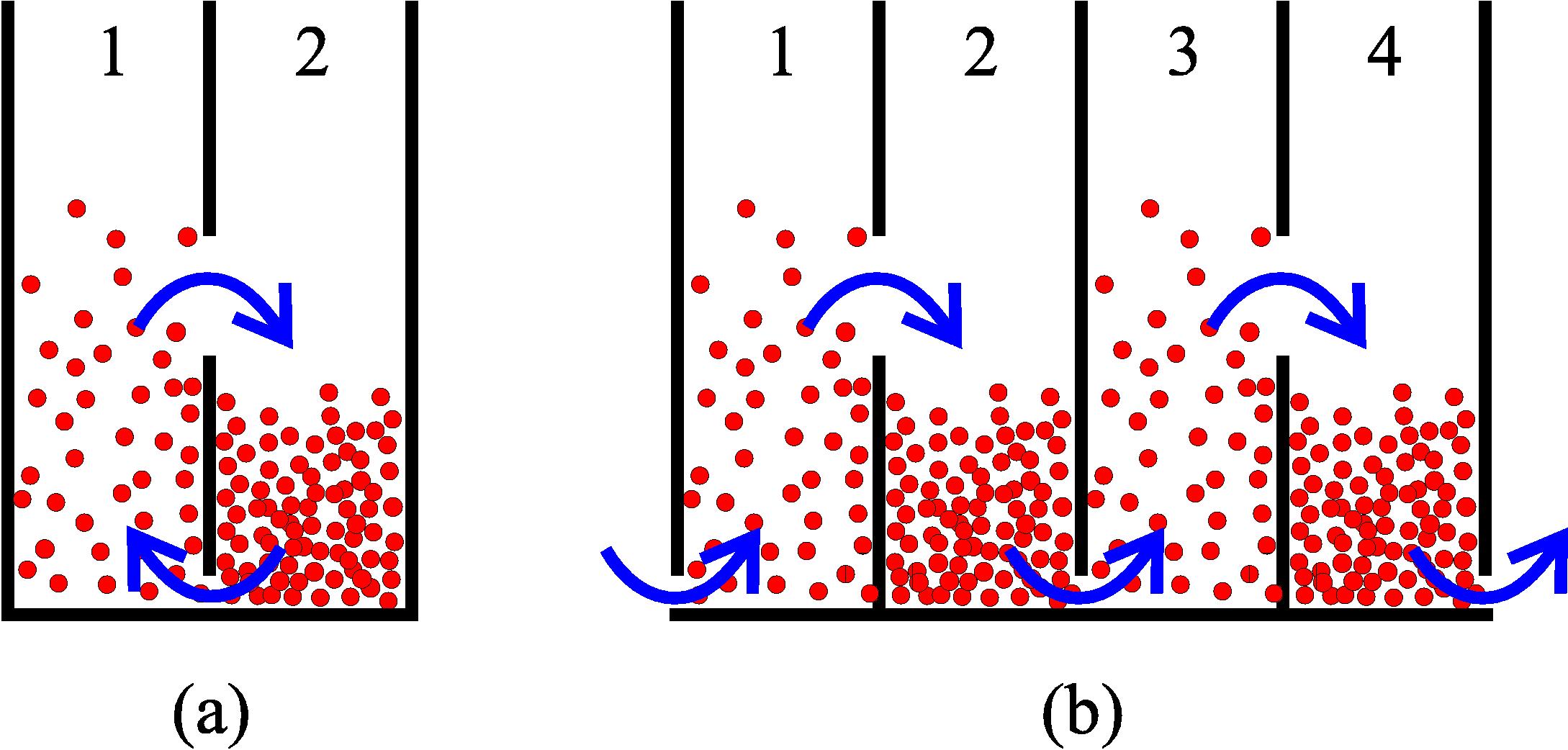
| Participating group members: | Peter Reimann |
| Main cooperation partners: | Detlef Lohse, Devaraj van der Meer (Physics of Fluids group at the University of Twente), Ko van der Weele |
 |
(a) Schematic cross section of a granular fountain exhibiting spontaneous symmetry breaking into a "cold" and a "hot" compartment and a concomitant spontaneous circular particle flow. (b) By folding out the geometry of several adjacent fountains, and adding cyclical boundary conditions, a granular ratchet is obtained with almost unchanged populations of the respective compartments and the particle currents between them. |
D. van der Meer, P. Reimann, K. van der Weele, and D. Lohse
Spontaneous Ratchet Effect in a Granular Gas
Phys. Rev. Lett. 92, 184301 (2004)
This work is illustrated by a
movie (32 MB).
D. van der Meer and P. Reimann
Temperature Anisotropy in a Driven Granular Gas
Europhys. Lett. 74, 384 (2006)
D. van der Meer, K. van der Weele, and P. Reimann
Granular fountains: Convection cascade in a compartmentalized granular gas
Phys. Rev. E 73, 061304 (2006)
D. van der Meer, K. van der Weele, P. Reimann, and D. Lohse
Compartmentalized granular gases: flux model results
J. Stat. Mech., Art. No. P07021 (2007)
Last modified on 2008-09-03